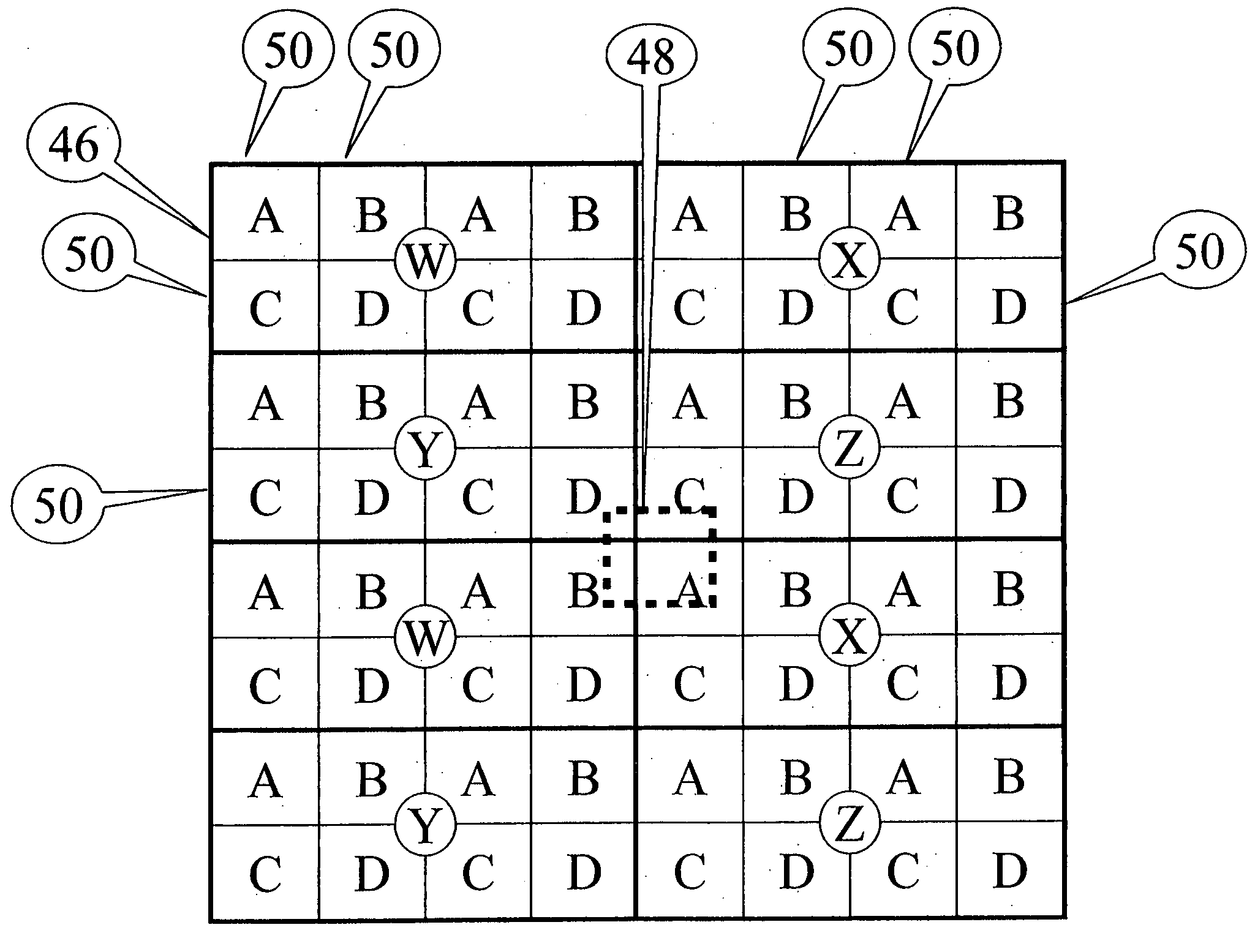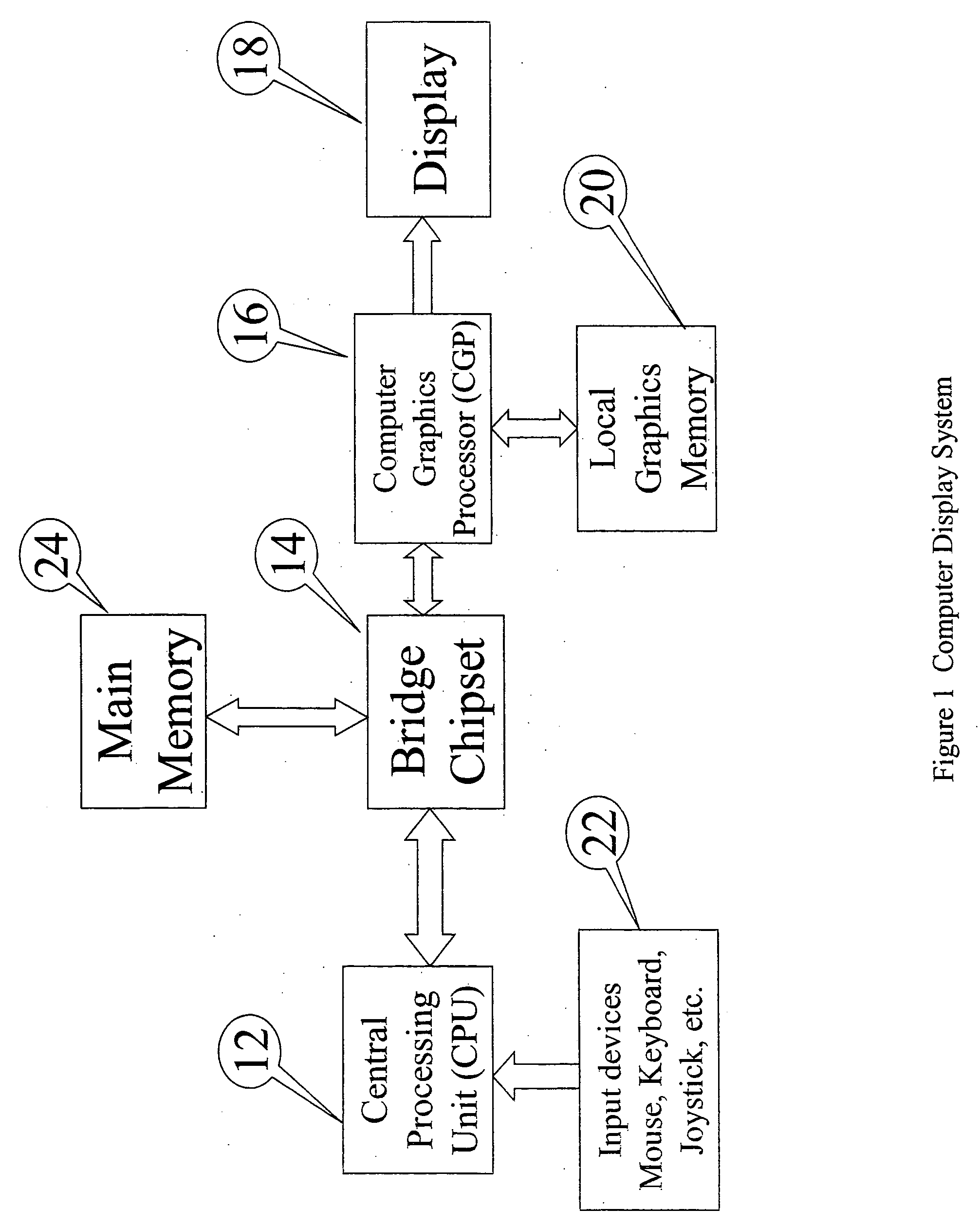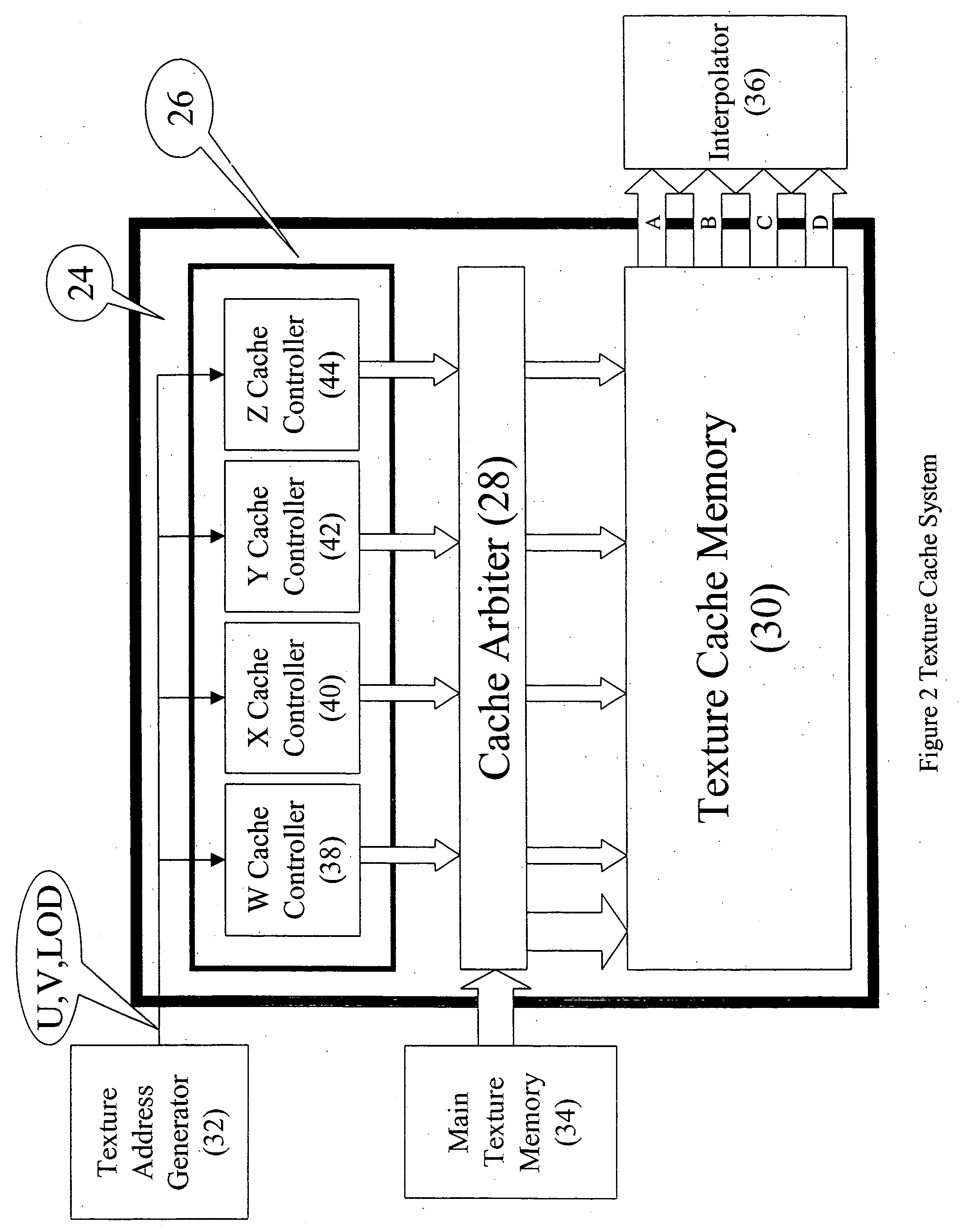3-D rendering texture caching scheme
a 3d rendering and texture technology, applied in the field of computer graphics processors, can solve the problems of limited texel-to-pixel ratio for interpolation filtering (bilinear, trilinear, etc.), and achieve the effect of increasing the effectiveness of local texel reus
- Summary
- Abstract
- Description
- Claims
- Application Information
AI Technical Summary
Benefits of technology
Problems solved by technology
Method used
Image
Examples
Embodiment Construction
[0041]FIG. 1 illustrates a functional block diagram of a computer display system. This system generally includes a Central Processing Unit (CPU) 12, a bridge chipset 14, a main memory 24, input devices 22, a display 18, a local graphics memory 20, and a Computer Graphic Processor (CGP) 16. The CGP 16 determines the graphical information to be sent to the display 18 based on inputs from the CPU (12) and data in main memory (24) and local graphics memory (20). The CPU (12) has access to data stored on disk, networks, or CD-ROM, etc. and based on power on sequences, programs booted at start up, and user inputs by the input devices, the CPU (12) will determine the data stream sent to the CGP (16). This data stream will be used by the CGP (16) to create the desired image on the display (18). The viewer is linked to the computer image generation process through an input control device (22) such as a keyboard, mouse, joystick, etc.
[0042] The CGP (16) described in this invention is large a...
PUM
 Login to View More
Login to View More Abstract
Description
Claims
Application Information
 Login to View More
Login to View More - R&D
- Intellectual Property
- Life Sciences
- Materials
- Tech Scout
- Unparalleled Data Quality
- Higher Quality Content
- 60% Fewer Hallucinations
Browse by: Latest US Patents, China's latest patents, Technical Efficacy Thesaurus, Application Domain, Technology Topic, Popular Technical Reports.
© 2025 PatSnap. All rights reserved.Legal|Privacy policy|Modern Slavery Act Transparency Statement|Sitemap|About US| Contact US: help@patsnap.com



